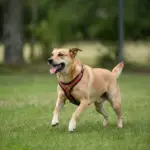Dogs are naturally curious animals. They love to sniff, lick, and chew on the things around them. While this behavior can be adorable, it can also be incredibly dangerous. Many everyday household items we consider harmless could be life-threatening to your furry friend. If you’re a pet owner, dog lover, or animal safety advocate, understanding these hazards is essential. Knowing what to avoid can create a safer environment for your pup.
Here, we’ll identify 20 household items that could kill a dog instantly, including toxic foods, chemicals, and plants. We’ll also provide tips to pet-proof your home and keep your dog’s health in check.
Why Knowing These Hazards Matters
Pet safety starts at home. Dogs don’t know which items are harmful, so it’s up to us to protect them. Every year, thousands of dogs suffer after consuming or interacting with dangerous substances. By learning which household items pose a risk, you can take proactive steps to keep your dog safe.
Now, here’s a list of common household dangers for dogs.
Toxic Foods That Can Harm Dogs
1. Chocolate
Chocolate contains theobromine, which is toxic to dogs. Even a small amount of dark or baking chocolate can lead to seizures, heart issues, or worse.
2. Grapes and Raisins
Grapes and raisins cause sudden kidney failure in dogs. Never leave them out where your dog can reach them.
3. Onions and Garlic
These kitchen staples can destroy a dog’s red blood cells, leading to anemia. Whether raw, cooked, or powdered, they are dangerous.
4. Xylitol-Containing Products
Xylitol, an artificial sweetener found in sugar-free gum, candy, and some peanut butter, can cause hypoglycemia or liver failure in dogs within hours.
5. Alcohol
Even small amounts can result in vomiting, diarrhea, coordination problems, or even coma in dogs.
6. Caffeine
Caffeinated drinks and foods, like coffee or energy drinks, can lead to restlessness, rapid breathing, or heart issues in dogs.
Dangerous Household Chemicals
7. Antifreeze (Ethylene Glycol)
Antifreeze has a sweet taste that attracts dogs, but it is highly toxic and can lead to kidney failure.
8. Cleaning Products
Bleach, ammonia, and disinfectants can cause chemical burns or poisoning if ingested. Always keep cleaning supplies out of reach.
9. Rodenticides and Pesticides
Mouse and rat poison can kill dogs quickly if consumed. Even indirect exposure, such as eating a poisoned rodent, is dangerous.
10. Fertilizers
These lawn care products contain chemicals that can upset your dog’s stomach or poison them entirely.
11. Medications
Many human medications, such as ibuprofen, acetaminophen, and antidepressants, are toxic to dogs. Store medicine in pet-proof containers or high places.
Hazardous Household Items
12. Batteries
If chewed or swallowed, batteries can cause burns to your dog’s stomach or intestines due to leaking acid.
13. Essential Oils
Certain essential oils, like tea tree oil and eucalyptus, are toxic to dogs and can cause vomiting, tremors, or even liver damage.
14. Small Toys or Trinkets
Small objects, such as children’s toys, paperclips, or coins, can become choking hazards or cause intestinal blockages.
15. Mothballs
Mothballs contain a pesticide that can be lethal to dogs if ingested.
16. Zinc-Containing Items
Pennies and some creams contain zinc, which can lead to zinc poisoning, causing vomiting, diarrhea, or even organ damage.
Dangerous Plants
17. Lilies
While lilies are more toxic to cats, consumption by dogs can still cause stomach upset or more severe problems with certain varieties.
18. Aloe Vera
Though great for humans, aloe vera is harmful to dogs if ingested, causing vomiting or diarrhea.
19. Sago Palm
Every part of this plant is toxic, but its seeds are especially dangerous, leading to severe liver failure.
20. Dieffenbachia (Dumb Cane)
Often a popular houseplant, Dieffenbachia contains calcium oxalate crystals, which cause oral irritation, drooling, or swelling in dogs if chewed.

How to Keep Your Dog Safe
Pet-Proof Your Home
- Store all food, medications, and chemical products in locked cabinets or high places.
- Remove or place plants out of reach.
- Keep small objects and toys off the floor to prevent choking hazards.
Recognize Poisoning Symptoms
Common signs of poisoning in dogs include vomiting, drooling, diarrhea, lethargy, seizures, and difficulty breathing. If you notice any of these symptoms, contact your vet immediately.
Create a Safe Space
Designate an area of your home where your dog can explore freely without the risk of encountering hazardous items.
Stay Educated
Regularly review which household products and plants are dangerous for dogs. Pet safety is an ongoing responsibility.
Protecting Your Furry Friend
Your dog relies on you for their safety. By identifying these household hazards and taking proactive steps, you can minimize risks and ensure a happier, healthier life for your pet.
If you suspect your dog has ingested something harmful, contact your veterinarian or a pet poison helpline immediately. Safety starts with being prepared, so take action today to secure your home.







